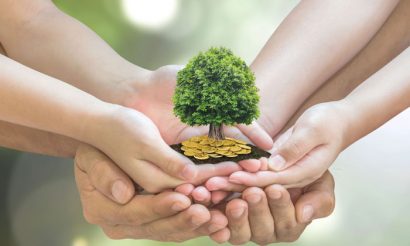Sustainable development indicators – can statistical indicators transform from back mirrors into drivers of change?
Posted: 20 February 2017 | | No comments yet
Johanna Laiho-Kauranne examines the 17 UN sustainable development goals that have been implemented for monitoring sustainability development…


The 17 UN sustainable development goals (SDGs) have challenged the statistics communities to extract information for monitoring sustainability development. In addition, the SDGs have initiated almost all international organisations to develop their own set of SDG indicators.


Currently, these are being developed also for the European Union.
The aim to gather meaningful data across the world on the trends in sustainable development has been ambitious. The UN SDG Global database is an example of ambiguity and strive for the expansion of knowledge.
The UN Statistical Division has succeeded in a relatively short period of time to publish the Sustainable Development Indicators in Global Database. This is a great common achievement to congratulate the international community. The web service is a treasury for the sustainability balance of the Globe.
The list includes 230 indicators on which general agreement has been reached.
The contents of the indicator set cover widely areas of sustainable development. The list includes 230 indicators on which general agreement has been reached.
Examples of sustainable indicators are indicators like “Direct disaster economic loss in relation to a global gross domestic product (GDP)”, “Level of water stress: withdrawal as a proportion of fresh water sources” and “CO2 emissions per value added unit”.
All difficult areas to measure, and they require huge competence and resources, connection to monitoring programs as well as seamless co-operation between the statistical community and the research.
The Sustainable Development Goals imply and build expectations for strong focus on the sustainable use of natural resources.
In refining the indicator set, we should also look back to the sustainable development goals themselves. For example, the SDG #5 is formulated into “gender equality” in contrast to the generic goal on equality of people.
Gender equality
The gender equality is important area of equality and should be monitored. However, in addition we would need to have a larger concept of equality in modern societies. The current indicator on equality does not currently touch upon the equal rights of minorities, which may lead to further conflicts.
One crucial aspect of many conflicts is the lack of equal rights to natural resources, land and water as well as equality at educational systems and in labour markets.
Sustainable Development Goals should be linked closely with circular economy
The Sustainable Development Goals imply and build expectations for strong focus on the sustainable use of natural resources. Therefore, indicators on SDG #9 on Industry, innovations and infrastructure should be linked closely to the aims of sustainability. Currently, there is no linkage to the bio-based industry, circular economy, usage of side streams, innovations with sustainable impacts, or investment to reduce pollution.
Monitoring the efficient use of materials and side streams together with the environmental impacts would substantially push the SDGs more towards assessing the sustainability of Industry, innovation and infrastructure.
Generally in all indicators there is a rule of thumb – what you measure, is what you get.
If the indicators observe generic patterns that are not directly affecting the industry nor policy makers, they risk of being the mirror of the development.
There is however a great momentum to tune the SDG statistical indicators to become more policy relevant and drivers for change in promoting sustainable development.









